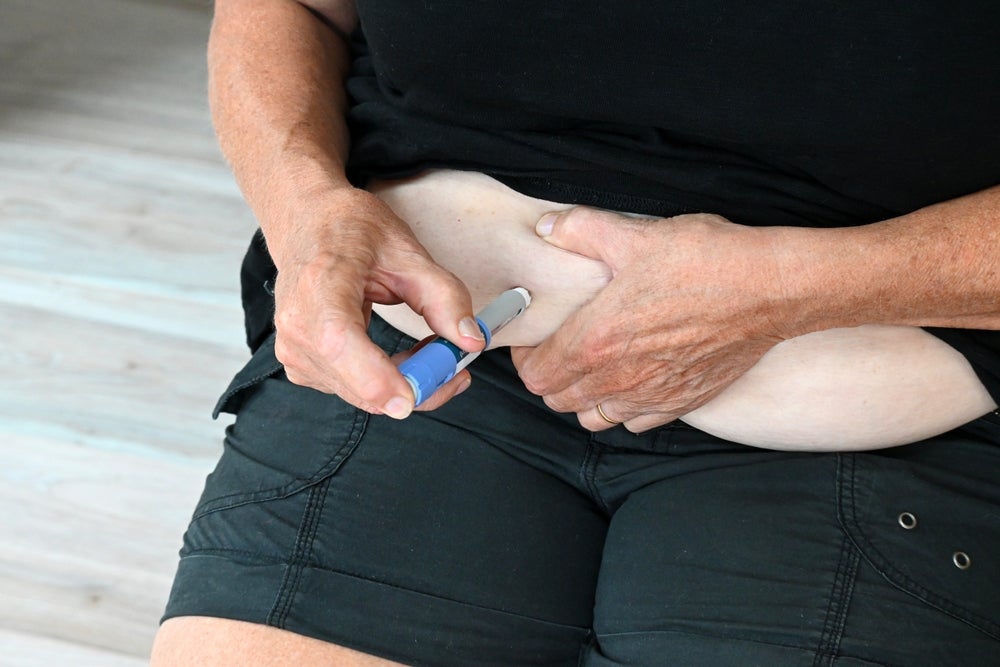There are currently no marketed disease-modifying therapies (DMTs) for Parkinson’s disease (PD).
Key opinion leaders (KOLs) previously interviewed by GlobalData, a leading data and analytics company, identified the lack of DMTs as the largest unmet need in PD treatment.
At the American Academy of Neurology (AAN) 2024 annual meeting, Roche presented positive four-year results from a six-year open-label extension of its Phase II ‘PASADENA’ trial evaluating the efficacy of prasinezumab (PRX-002), a potentially PD-modifying monoclonal antibody.
In Roche’s Phase II PASADENA trial, 316 participants received an intravenous infusion of either PRX-002 or placebo at 1,500mg (low dose cohort) or 4,500mg (high dose cohort) every four weeks for 52 weeks.
After 52 weeks, all participants were placed on PRX-002, with the placebo group transitioning into a one-year delayed-start cohort.
See Also:
At the two-year mark, the trial then received a six-year open-label extension, which has now been underway for two years.
How well do you really know your competitors?
Access the most comprehensive Company Profiles on the market, powered by GlobalData. Save hours of research. Gain competitive edge.

Thank you!
Your download email will arrive shortly
Not ready to buy yet? Download a free sample
We are confident about the unique quality of our Company Profiles. However, we want you to make the most beneficial decision for your business, so we offer a free sample that you can download by submitting the below form
By GlobalDataThe results presented by Roche at AAN follow four years of treatment in the PASADENA trial, with measurements taken at yearly intervals, and data from Years 3 and 4 being presented for the first time.
With no control arm present, as all PASADENA participants received PRX-002 after Week 52 of the trial, an open-access dataset from the Parkinson’s Progression Marker Initiative (PPMI) observational study in participants with early sporadic PD who received symptomatic treatment was selected as the external control.
The selected patient population matched the PASADENA study where symptomatic therapies were also permitted after 60 days of treatment initiation with PRX-002, offering a suitable control group.
To support the validity of the comparison to the external control, Roche applied the same inclusion and exclusion criteria to the PPMI cohort as was applied to the PASADENA cohort.
Subsequently, propensity score weighting was applied to mimic the characteristics of a randomised controlled trial that compared the baseline characteristics and progression over one year of the PPMI cohort with the PASADENA placebo group from the first year.
This resulted in balanced baseline demographics and clinical characteristics between the PASADENA participants and the PPMI cohort.
Further supporting the validity of the control, there was no significant difference in scores on the Movement Disorder Society-Sponsored Revision of the Unified Parkinson’s Disease Rating Scale (MDS-UPDRS) between the PPMI cohort, the placebo group, and PRX-002-treated individuals when looking at the first-year outcomes.
This is in line with the PASADENA trial’s failure to meet the first-year primary endpoint as measured by the sum of Parts I, II, and III of the MDS-UPDRS.
At the time, there were reasons to believe that the extension of the trial was warranted.
While not the primary endpoint, there was a significant slowing of PD motor progression in the PRX-002-treated cohort compared to the placebo group, and retrospectively with the PPMI cohort, as measured by MDS-UPDRS Part III scores in the first year of the trial.
The PPMI observational studies have shown that in the natural progression of PD, the Part I and II subscales of the MDS-UPDRS are unlikely to change over a one-year period.
A treatment effect on disease progression can only be measured when participants in the placebo/external control groups progress sufficiently on the endpoint of interest.
This did not occur with the PASADENA placebo group for the MDS-UPDRS Part I and II endpoints in the first year of the trial.
However, with the recently announced longer-term follow-up results from the open-label extension, a significant shift can be seen in the treatment effect from three years of treatment onwards.
At the three- and four-year intervals, the prasinezumab-treated cohort (including the delayed-start cohort) showed a significant reduction in PD motor progression as measured by MDS-UPDRS Part II and Part III scores.
This suggests that from three years onwards, PRX-002 slows PD motor progression.
These results should be treated as preliminary, specifically as an exploratory open-label extension rather than a double-blind trial.
These results, in addition to indicating positive outcomes with PRX-002, also highlight the fact that clinical trials of PD DMTs may require longer than one year of follow-up in order to measure clinically meaningful disease-modifying effects as defined by the progression of patient-reported motor symptoms, functional activities of daily living, and non-motor symptoms.
These longer studies would be a worthwhile endeavour due to the strong need for DMTs within the PD treatment space.
KOLs who spoke to GlobalData prior to AAN unanimously stated high hopes for PRX-002 in terms of modifying disease progression and offering neuroprotective effects.
Whether or not these hopes will be realised remains to be seen depending on the results of PADOVA, the ongoing Phase IIb trial evaluating PRX-002.
However, these latest long-term follow-up results from PASADENA are encouraging.









